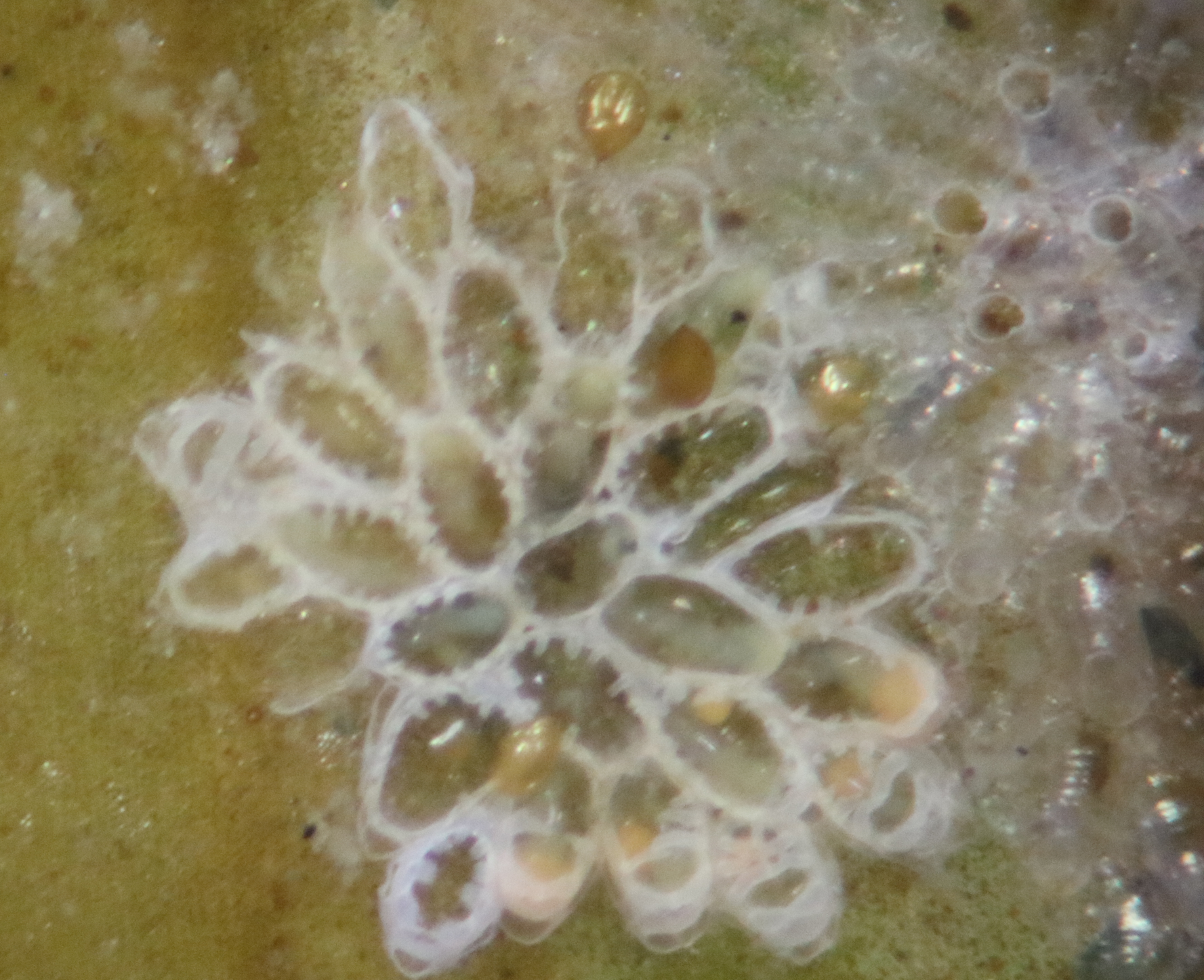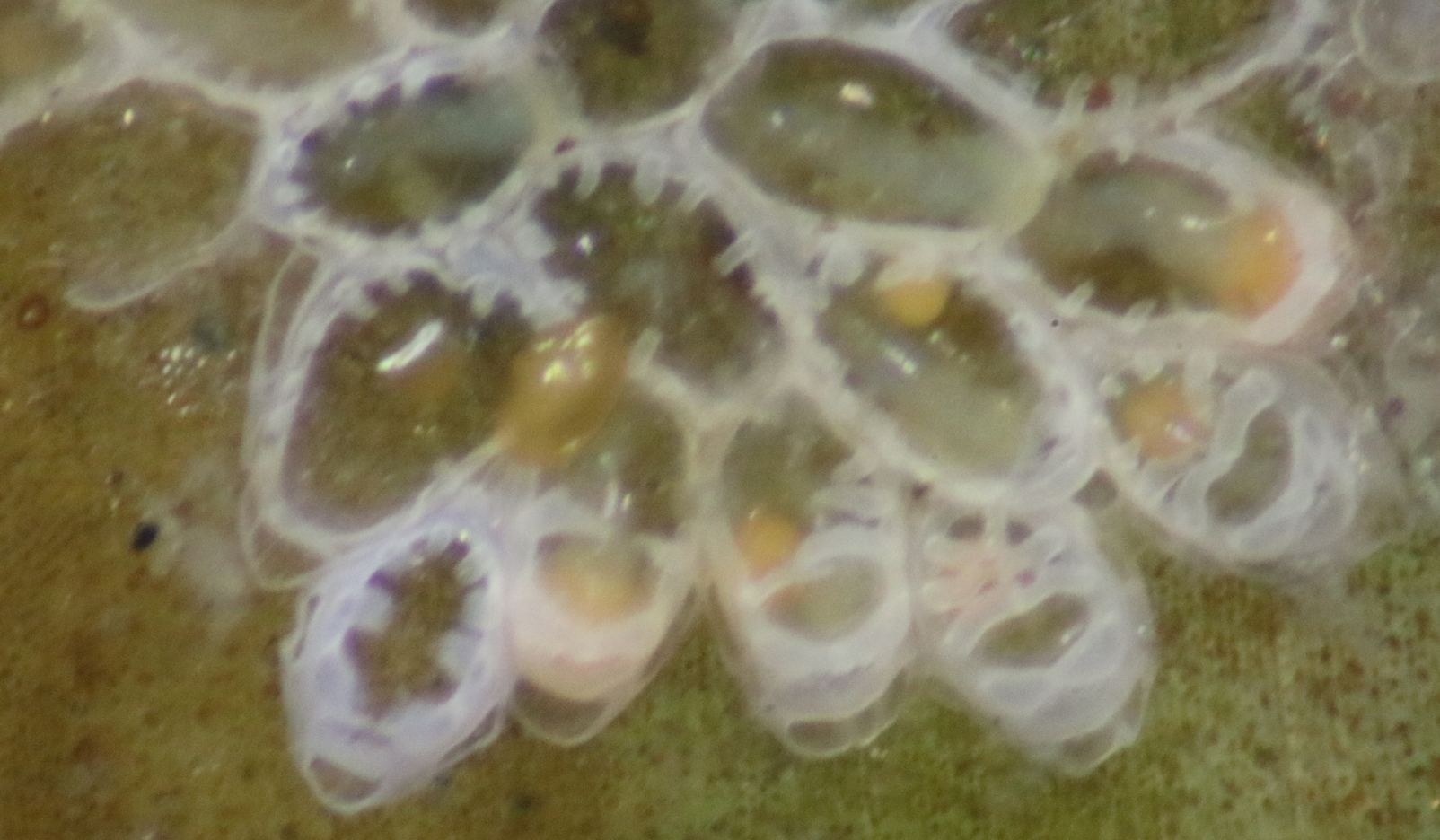Callopora horridaSlender-spined Bryozoan |
|
| Synonyms:
Tegella horrida Membranipora horrida |
|
| Phylum Bryozoa
Class Gymnolaemata Order Cheilostomata Suborder Anasca Family Calloporidae |
|
| Callapora horrida collected at Rosario Marine Station, WA | |
| Photo by: Anna Dyer, 2002 | |
How to Distinguish from Similar Species: A microscope and a dichotomous key are needed to positively identify Callopora horrida.
Geographical Range: This species is found from Kodiak Island, Alaska, to California and in Japan Bathymetry.
Depth Range: Found in both intertidal and subtidal zones.
Habitat: Grows on hard substrata such as shells, stones and hard sponges.
Biology/Natural
History: No information
on the biology of this particular species is known. The
following
information is for Bryozoans in general. The individuals in a
colony
are interconnected. Their nervous systems are linked and
nutrients
can be passed from autozooids to the non-feeding
heterozooids. Most
bryozoans are hermaphroditic with members of each sex within the same
colony.
In most species, the embryos are yolky and the larva that develop are
non-feeding.
They swim briefly but soon settle, attach to new substratum and
metamorphose
into the ancestrula.
In the colony, members can overgrow inferior competitors for
space.
The major predators of bryozoans include pycnogonids
and nudibranchs
but may also be eaten by sea urchins and chitins. Their
calcification
makes them unattractive prey. Bryozoans protect themselves
chemically
by the formation of secondary compounds, some of which have anti-cancer
properties.
| Return to: | |||
| Main Page | Alphabetic Index | Systematic Index | Glossary |
References:
Dichotomous Keys:
Kozloff, 1987, 1993
General References:O'Clair and O'Clair, 1998
Scientific
Articles:
Wollacott, Robet M. and
Wheeler J. North, 1971. Bryozoans of California and northern
Mexico kelp beds. pp. 455-479 in North, Wheeler J. (ed.), The
Biology of Giant Kelp Beds (Macrocystis)
in California.
Beihefts zur Nova Hedwigia Heft 32. Publisher: J.
Cramer, Lehre, Germany.
General Notes and Observations: Locations, abundances, unusual behaviors:
| Below are several microphotographs of Callopora horrida found on a floating, decaying eelgrass leaf in Padilla Bay. Photos by Dave Cowles, July 2020. |
 |
 |
Authors and Editors of Page:
Anna Dyer (2002): Created original page
Edited by Hans Helmstetler 11-2002